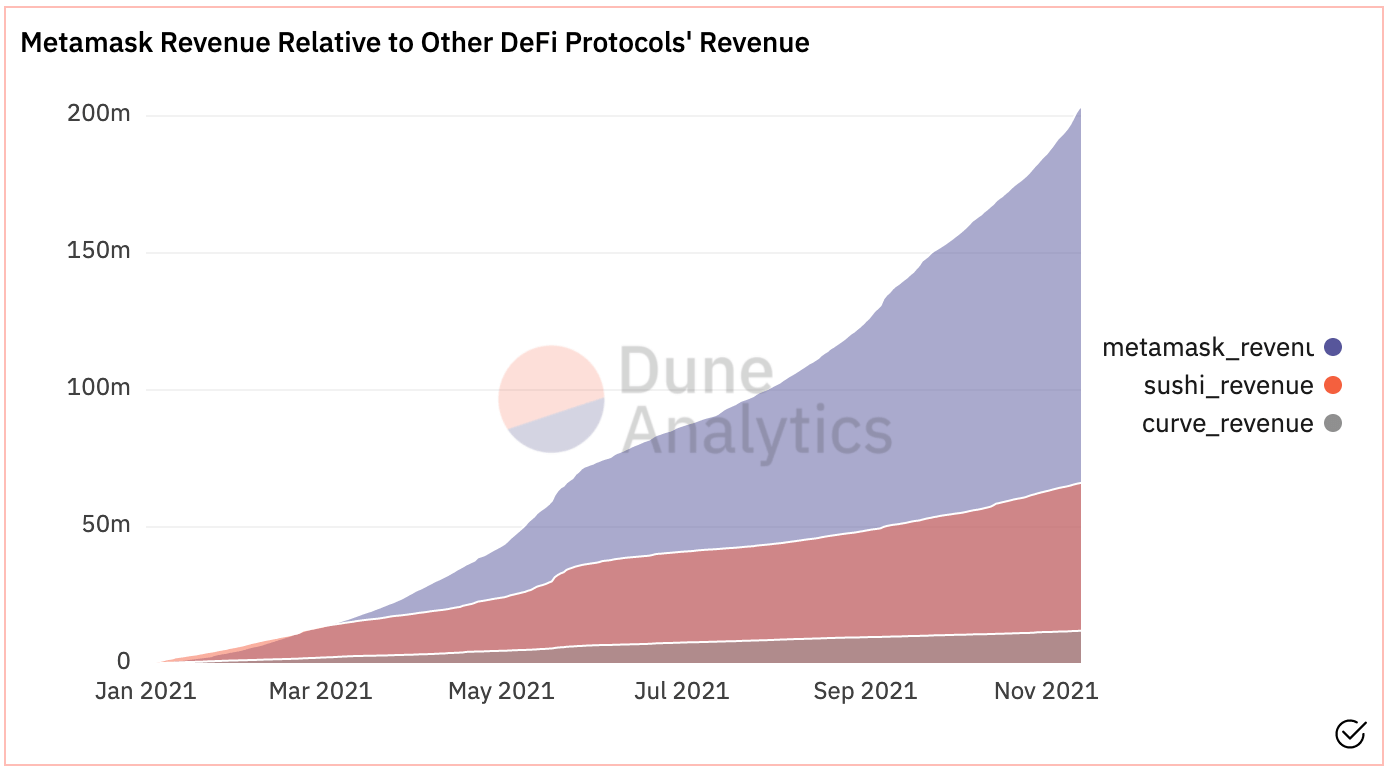This Week In Crypto
MetaMask teases an airdrop, Coinbase launches a wallet, Metis Bridge and the Maker Wormhole are coming to ETH, and ENS had a large airdrop.

Metamask Teases Potential Token with Rumored Airdrop
Last week, ConsenSys founder Joseph Lubin teased a new Metamask token on Twitter, called MASK. Metamask previously mentioned it was exploring the possibility of launching a token.
Metamask is a suite of Ethereum wallet apps and browser extensions that functions as a gateway to the decentralized finance (DeFi) ecosystems of Ethereum and other blockchains. Metamask comes from Lubin's incubator, Consensys, and JP Morgan is said to have a large stake. Previously, it was believed JP Morgan's influence was preventing a Metamask token release, but Lubin suggested the big bank does not mind.
There are rumors that early Metamask users will receive free tokens through an airdrop. Further rumors suggest that the airdrop will be for users of Metamask's swap feature. There is no known cutoff date for which users receive an airdrop (should an airdrop happen).
Metamask has a massive influence on the DeFi ecosystem. It has 10 million monthly active users across its suite of phone apps and browser extensions and is the largest entrypoint to DeFi. While the primary function of Metamask is as a temporary wallet for moving crypto online, Metamask also offers a swap feature, which generates more fees than any other decentralized exchange (DEX).
Metamask has integrated several DEXs into its swap feature, so its swap can offer users significant liquidity and good prices on assets. Metamask's 0.875% fee is higher than average, however.

Venture Capitalist Momir Amidzic explains on Dune, "Relative to other DeFi protocols, 0.875% is relatively high. For instance, in Sushiswap five basis points of the total volume is the revenue of the SUSHI stakers, while in Curve only 2 basis points of the volume is distributed to stakers.
Or in simple terms, a dollar of volume on Metamask is roughly 17 and 44 times more valuable than a dollar of volume on Sushiswap or Curve, respectively!"
If Metamask does ultimately offer a token with its economics tied to the swap's fee income, the new MASK token could be quite valuable.

Coinbase Wallet Launches Browser Extension
Most major self-custody crypto wallets operate through browser extensions, which makes integration with decentralized apps (dapps) as easy as approving a pop up; this pattern has become commonplace in the ecosystem. In most cases, you need an in-browser crypto wallet to interact with dapps, as many sites don’t host a wallet to hold customers' funds. The largest of these wallets is MetaMask, which recently hit 10M monthly active users, an 1800% increase over the past year. MetaMask is compatible with most Ethereum Virtual Machine (EVM) compatible tokens, but its biggest drawback is that it is not compatible with many other Layer 1 cryptocurrencies, like Solana. Most of those coins have their own wallets, like Solana’s Phantom, which touts 1M monthly active users.
This past week, Coinbase launched their own web wallet extension to compete with MetaMask, bringing much of the convenience of using Coinbase natively to the web3 browser experience. This is a non-custodial wallet that you can use to interact with the decentralized finance (DeFi) ecosystem, a sector into which the company has seen limited expansion due to regulators. This means Coinbase’s 56M users now have a streamlined way to buy thousands of cryptocurrencies, trade on decentralized exchanges (DEXs), use dapps, earn interest, and collect non-fungible tokens (NFTs) – all this in lieu of being locked into a centralized exchange to merely buy and sell.
Coinbase’s wallet also has native integration with a few major wallets, including MetaMask, so users can simply import their wallet and make the swap.

Metis Bridge and the Maker Wormhole are Coming to Ethereum
Metis, a new Ethereum Layer 2 project, has announced it will launch its mainnet on November 15. Metis is supporting its launch with Genesi, a “decentralized autonomous company” (DAC) that will spend $100 million to help grow projects built on or integrated with Metis.
Metis is an optimistic rollup. The L2 blockchain is used for processing transactions, which are then bundled and posted as a single block to the L1, the Ethereum mainnet. Metis intends to position itself among popular optimistic rollups Arbitrum and Optimism, which have about $3.2 billion in total value locked.
While Ethereum L2s have become extremely popular, most require users to pay high gas fees to bridge their assets onto the L2. Many L2s also hold coins up to seven days before transferring assets back to the Ethereum mainnet.
Maker, the decentralized autonomous organization (DAO) in charge of stablecoin DAI, announced their solution to these L2 problems: the Maker Wormhole. The Wormhole is a near-instant bridge with extremely low fees and short hold periods. Instead of using liquidity, the Wormhole mints and burns DAI on each side of the bridge transaction, using an oracle to track both sides.
Maker intends to integrate with Arbitrum and Optimism first, then add other L2s later. The organization plans to launch the Wormhole in Q1 2022.

Ethereum Name Service (ENS) Airdrops Token
If you’re a part of crypto Twitter, you’ve probably seen people with the “name.eth” profile name or website. Those people are early adopters of the Ethereum Name Service (ENS). ENS works similarly to traditional website domain name services with some fun twists: you go to the site, check if your name is available, and you can buy it with Ethereum via your browser extension wallet. This domain can be used like a normal website url, but it also has additional functions like setting a domain name for your crypto wallet. This means that you can set up a pay.name.eth and direct Ethereum payments to your wallet that way, making it much easier to use the blockchain for everyday transactions than the current model requiring a 64-character string of numbers and letters. These sites are also decentralized, making them much more resistant to censorship.
This past week, ENS launched their token by airdropping it to early adopters who bought ENS domains. There were three tiers of payouts for users based on how long the user has held a domain and the age of the domain held. The payouts were 200 ENS, 500 ENS, and 1000 ENS, which equates to 5 figures for everyone who was airdropped tokens. At the peak of the market over the past few days, the lowest tier of airdrop netted $17k worth of tokens. The ENS token is primarily for governance, allowing holders to vote on decisions for the direction that ENS takes.
The token price has bounced around greatly in the week since launch, hitting a low of $17.63 and a high of $84.62. The price is currently $54.71.

